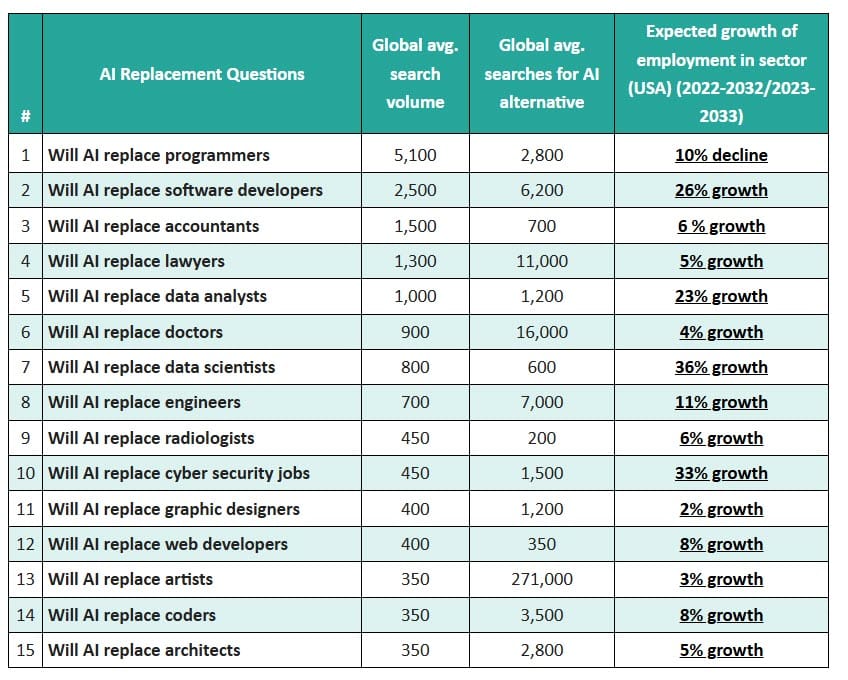Programmers express highest concern over AI job displacement while data science positions set to grow 36%, new research shows
Despite widespread anxiety about artificial intelligence replacing workers, most professions facing AI concerns are actually projected to grow over the next decade, according to new research from AIPRM analyzing global search data. The exception is programming, which faces a projected 10% employment decline by 2033.

The study reveals a striking disconnect between worker concerns and actual job prospects. While searches for “AI alternatives” surge across multiple fields, employment projections remain positive for most sectors. Data science, for instance, is expected to see 36% employment growth despite workers’ apprehension about AI displacement.
Search data shows programming-related queries dominate AI replacement concerns, with 5,100 monthly searches asking whether AI will replace programmers. The legal profession demonstrates a particularly stark contrast between anxiety and demand for AI solutions – while “Will AI replace lawyers?” generates 1,300 monthly searches, “AI lawyer” attracts 11,000 searches from those seeking automated alternatives.
Healthcare professionals aren’t immune to these concerns. Searches for “AI doctor” reach 16,000 monthly queries, though doctor employment is projected to grow 4% by 2033. Similar patterns emerge in radiology, where despite replacement concerns, the field is expected to grow 6%.
The findings suggest that while AI may automate certain tasks – potentially automating up to 44% of legal work according to Goldman Sachs – most professions will adapt rather than disappear. Even in fields like software development, where technical tasks might be automated, human skills such as creativity and analytical thinking remain crucial, driving a projected 26% employment growth through 2033.
The research indicates that although AI anxiety is widespread, most professions will likely evolve to incorporate AI rather than be eliminated by it. The challenge for workers appears to be adapting to AI integration while maintaining the human elements that remain irreplaceable.

